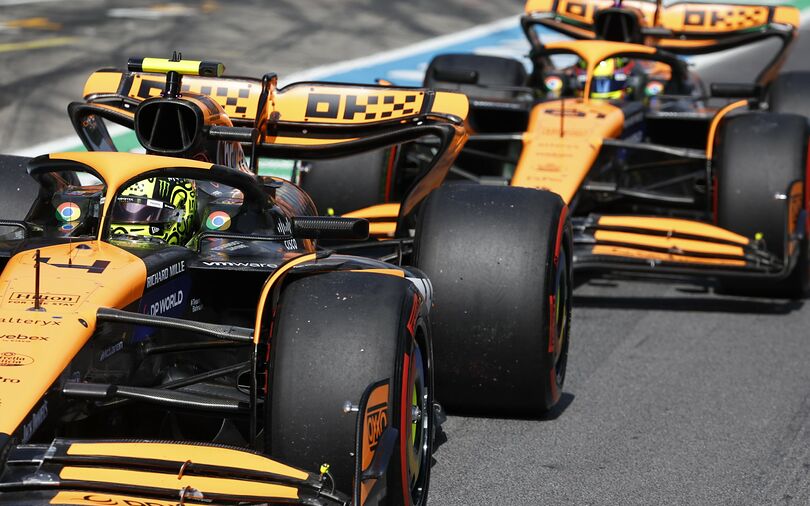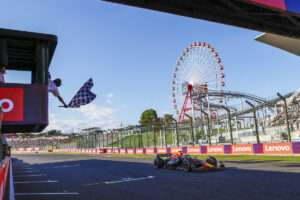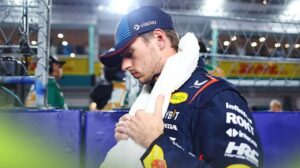FIA ANALYSIS: Mercedes and McLaren lead front wing…, Ferrari and Red Bull with almost…read More.

ANALYSIS: Mercedes and McLaren lead front wing…, Ferrari and Red Bull with almost…read More.
During the Italian Grand Prix, a technical analysis revealed that McLaren and Mercedes are capitalizing on the flexibility of their front wings to gain performance advantages, while Ferrari’s front wing remains notably rigid. This flexibility is within the permissible limits set by the FIA, which has been closely monitoring the situation in recent months.
The FIA first took notice of front wing flexibility during the Belgian Grand Prix at Spa-Francorchamps, where they performed additional checks using video footage. Although the technical regulations allow for a certain degree of flexibility in aerodynamic parts, the governing body grew concerned that some teams were pushing the boundaries too far.
Formula 1 regulations regarding front wing flexibility are detailed in Article 3.15.4. This article outlines the process by which the front wing’s flexibility is tested and scrutinized. The regulation acknowledges that all materials will flex under pressure, so some tolerance is built into the rules.
To test the wings, the FIA applies a force of 1000 newtons (equivalent to 100 kilograms) at three different points on the wing in a downward direction. The force is applied using a 50-millimeter diameter ram, and the deflection is measured relative to the car’s survival cell and along the loading axis.
According to Article 3.15.4, when the load is applied symmetrically to both sides of the car, the vertical deflection must not exceed 15 millimeters. When the load is applied to only one side of the car, the deflection limit is 20 millimeters. Additionally, Article 3.15.5 stipulates that the trailing edge of any front wing flap must not deflect more than 5 millimeters when subjected to a 60-newton force.
These regulations were put in place to prevent teams from gaining an unfair aerodynamic advantage through excessive wing flexibility. However, the new generation of ground-effect cars has presented teams with challenges in maintaining aerodynamic balance. Upgrades to the cars have often disrupted this balance, making the issue of wing flexibility even more significant.
After the Italian Grand Prix, the FIA released the results of their front wing flexibility investigation and confirmed that all teams were in compliance with the regulations. However, Mercedes and McLaren have attracted significant attention from rival teams and the FIA due to the apparent flexibility of their front wings.
Images from Monza clearly demonstrate the differences in front wing flexibility among the leading teams. McLaren’s front wing, for instance, exhibits a high degree of flexibility, with the outer part of the upper flap bending significantly backward under high load. This difference is particularly noticeable between the low- and high-speed sections of the track.
Mercedes has also employed a highly flexible front wing design. Under little load, the two elements of the upper flap appear somewhat detached. However, when the load increases, the outer section bends backward, allowing the two elements to form a solid edge in high-speed conditions. This flexibility likely provides the team with an aerodynamic advantage by optimizing the car’s performance across different speed ranges.
In contrast, Red Bull’s front wing shows only a minimal difference between low- and high-load configurations, indicating a less aggressive approach to exploiting front wing flexibility. Ferrari’s front wing, however, displays almost zero flexibility, adhering closely to the regulations without attempting to gain an advantage through subtle design tweaks.
Given the FIA’s approval of all teams’ designs, Ferrari and Red Bull may now look to follow McLaren and Mercedes’ lead. These two teams have successfully exploited the remaining flexibility allowed by the rules, gaining valuable performance improvements without breaching the regulations.
While the FIA has not intervened, the situation highlights the ongoing battle for aerodynamic supremacy in Formula 1. As teams continue to seek marginal gains, the development of front wing flexibility may remain a key area of focus, especially as the season progresses and every advantage becomes increasingly crucial in the championship fight.





